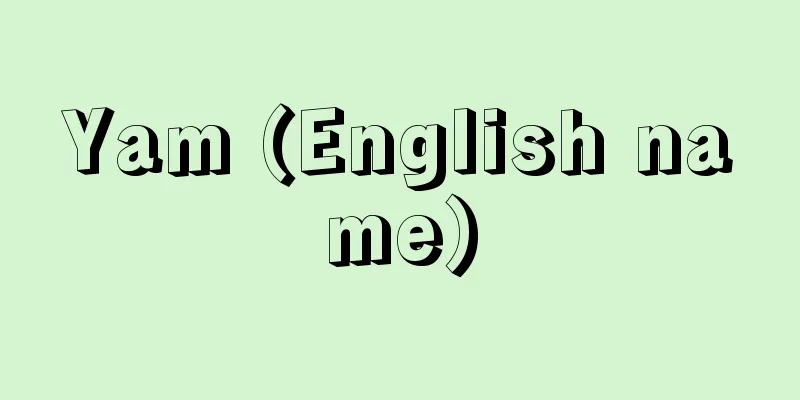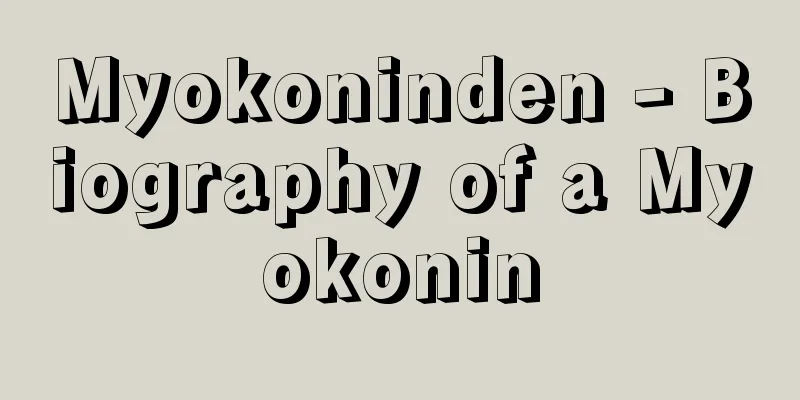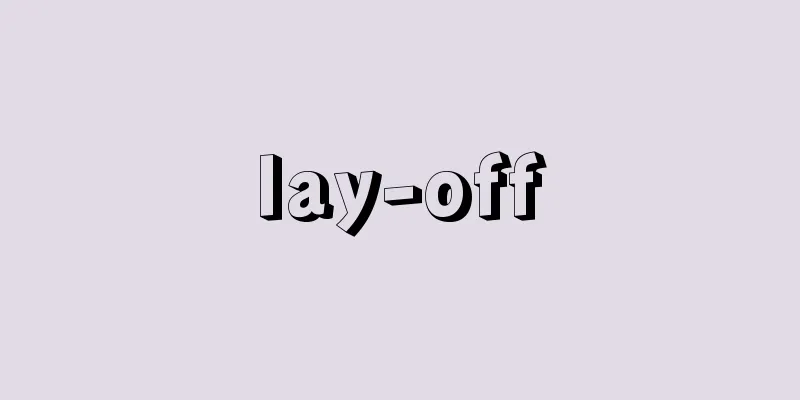Nuclear weapon tests

|
The act of actually exploding a nuclear explosive device to test its performance and effects. The world's first nuclear test took place on July 16, 1945, in the desert of Alamogordo, USA. The purposes of nuclear testing include developing new nuclear weapons, examining the effects of nuclear explosions, verifying the reliability of stored nuclear weapons, establishing safety management methods, and maintaining the functionality of personnel and facilities. It is estimated that about two-thirds of the nuclear tests conducted to date have been related to the development of new nuclear weapon systems. [Hattori Manabu] Damage caused by nuclear testingIn the 1950s, the United States, the former Soviet Union, and the United Kingdom conducted numerous nuclear tests. Most of these tests were conducted in the atmosphere, causing damage from radioactive fallout. In particular, on March 1, 1954, the American hydrogen bomb test was conducted at Bikini Atoll in the Pacific Ocean. The fishing boat Daigo Fukuryu Maru from Yaizu, Shizuoka Prefecture, 150 kilometers away, was exposed to a large amount of radioactive fallout, and all 23 crew members suffered acute radiation sickness, one of whom, Kuboyama Aikichi, died six months later. Furthermore, many fishing boats were contaminated by the ocean contamination, and large amounts of contaminated fish were found. The test also exposed 243 residents of the three islands of Rongelap Atoll, Utik Atoll, and Ailingunae Atoll to large amounts of radioactive fallout. Some islands, such as Bikini Atoll and Eniwetok Atoll, are still prohibited from habitation due to radioactive contamination. Radioactive fallout spread throughout the world, contaminating the entire planet. Public opinion in favor of a ban on nuclear testing grew stronger around the world, and at the United Nations in October 1954, Indian Prime Minister Nehru called for an agreement to moratorium on atomic and hydrogen bomb testing at a Political Committee meeting. In December 1955, the UN General Assembly established a Scientific Committee to Investigate the Effects of Radiation, also proposed by India, and this work is still ongoing. The UN Scientific Committee estimates that the effect of radiation from nuclear tests to date on humankind in the Northern Hemisphere is a few percent of the level of natural radiation. [Hattori Manabu] Partial Nuclear-Test-Ban TreatyIn August 1963, the United States, the former Soviet Union, and the United Kingdom signed the Partial Nuclear Test Ban Treaty, or Partial Nuclear Test Ban Treaty (PTBT), which banned nuclear testing in the atmosphere, underwater, and in outer space. However, underground nuclear testing was not banned because it would be difficult to verify violations, and was left as a loophole. France and China, which began nuclear testing in the 1960s, also did not join the treaty. By the time of the Partial Nuclear Test Ban Treaty, the United States had conducted 293 nuclear tests, the former Soviet Union 164, the United Kingdom 23, and France 8, for a total of 488 nuclear tests. The Partial Nuclear Test Ban Treaty curbed the increase in radiation in the atmosphere, but had no effect on limiting the number or power of nuclear explosions. The nuclear testing race continued, mainly with underground explosions, and by the end of 1997 a total of 1,030 nuclear tests had been conducted by the United States, 751 by Russia (including tests conducted during the Soviet era), 45 by the United Kingdom, 210 by France, 45 by China, and one by India, and in May 1998 India conducted five underground nuclear tests for the first time in 24 years, followed by five more in response by Pakistan, bringing the total to more than 2,000. Technology for underground nuclear tests also advanced, with the United States conducting a five-megaton nuclear test on Amchitka Island in November 1971. [Hattori Manabu] Comprehensive Nuclear-Test-Ban TreatyIn July 1974, the United States and the Soviet Union signed a limited nuclear test ban treaty at a summit meeting, in which both countries promised not to conduct underground nuclear tests of more than 150 kilotons and to conduct such tests only at designated test sites. This treaty never went into effect, and it placed almost no restrictions on the nuclear tests conducted by either country. In May 1976, a treaty commonly known as the Treaty on Peaceful Nuclear Explosions was also signed, which also limited the upper limit to 150 kilotons, but this treaty also never went into effect. 150 kilotons is a high yield, more than 10 times that of the Hiroshima atomic bomb. In September 1996, the United Nations General Assembly adopted the Comprehensive Nuclear Test Ban Treaty, which prohibits nuclear tests accompanied by nuclear explosions. However, several countries necessary for the treaty to come into force, such as India, have expressed their opposition to the treaty, and the United States and Russia have conducted subcritical nuclear tests that do not involve nuclear explosions. The nuclear tests conducted by India and Pakistan in May 1998 have put the treaty in danger of becoming a mere formality. In addition, North Korea announced in October 2006 that it had conducted an underground nuclear test. A US investigation found trace amounts of radiation in the area where the test was believed to have taken place, and the United Nations Security Council unanimously adopted a resolution imposing sanctions on North Korea under Chapter VII of the UN Charter. [Hattori Manabu] [References] | | | | | | |Source: Shogakukan Encyclopedia Nipponica About Encyclopedia Nipponica Information | Legend |
|
核爆発装置を実際に爆発させて性能や効果を試してみること。世界最初の核実験は1945年7月16日、アメリカのアラモゴードの砂漠で行われた。核実験の目的には、新しい核兵器の開発、核爆発の効果の検討、貯蔵核兵器の信頼性の確認、安全管理法の確立、人員や施設の機能の維持などがある。これまでに行われた核実験の約3分の2は、新しい核兵器体系の開発に関するものであったと推定されている。 [服部 学] 核実験による被害1950年代に、アメリカ、旧ソ連、イギリスの3国はおびただしい数の核実験を行った。そのほとんどが大気圏内で行われたために、放射性降下物による被害が生じた。とくに54年3月1日、太平洋のビキニ環礁で行われたアメリカの水爆実験の際には、150キロメートルも離れた所にいた静岡県焼津(やいづ)の漁船第五福竜丸は、大量の放射性降下物を浴び、23人の乗組員全員が急性放射線障害にかかり、そのうちの1人久保山愛吉が半年後に死亡した。また海洋の汚染によってその後も多数の漁船が汚染し、大量の汚染魚類が検出された。この実験ではロンゲラップ環礁、ウトリック環礁、アイリングナエ環礁の三つの島の住民243人も大量の放射性降下物を浴びている。ビキニ環礁、エニウェトク環礁などのいくつかの島は、現在も放射能汚染で居住禁止となっている。放射性降下物は全世界に広がり、地球全体を汚染するようになった。全世界で核実験禁止の世論が強まり、国連でも54年10月、インドのネルー首相が政治委員会で原水爆実験の休止協定を呼びかけた。55年12月、国連総会は、これもインドの提案による放射能影響調査科学委員会を設置し、この作業は現在も続いている。国連科学委員会では、これまでの核実験で生じた放射線が人類に与える影響を、北半球の場合、天然放射線の数%と推定している。 [服部 学] 部分的核実験禁止条約アメリカ、旧ソ連、イギリスの3国は、63年8月、部分的核実験禁止条約、略して部分核停条約(PTBT)に調印し、大気圏内、水中、宇宙空間での核実験は禁止された。ただし地下での核実験は、違反の検証が困難であるという理由で禁止されず、抜け穴として残された。また60年代になって核実験を始めたフランスと中国はこの条約に加わらなかった。部分核停条約までに、アメリカは293回、旧ソ連は164回、イギリスは23回、フランスは8回、合計488回の核実験を行った。部分核停条約によって、大気圏内の放射能の増加は抑えられたが、核爆発の回数や威力にはなんの制限効果もなかった。核実験競争は主として地下爆発で続けられ、97年末までに、総計でアメリカは1030回、ロシア(旧ソ連時代に行われた実験を含む)は751回、イギリスは45回、フランスは210回、中国は45回、インドが1回の核実験を、さらに98年5月にインドが24年ぶりに5回、それに対抗する形で新しくパキスタンが5回の地下核実験を行い、合計2000回以上となった。地下核実験の技術も進み、71年11月にはアメリカはアムチトカ島で5メガトンの核実験を行っている。 [服部 学] 包括的核実験禁止条約1974年7月、米ソ頂上会談で制限付き核実験禁止条約が調印され、両国は150キロトン以上の地下核実験を行わず、また実験は特定の実験場のみで行うことを約束した。この条約は発効せず、両国の行う核実験にはほとんどなんの制約にもならなかった。また76年5月には、普通、平和目的核爆発条約とよばれている条約も調印され、これも上限を150キロトンに制限したが、この条約も発効しなかった。150キロトンというのは広島原爆の10倍以上という高い数値である。 1996年9月、国連総会で包括的核実験禁止条約が採択され、核爆発を伴う核実験は行われないことになった。しかし、インドなど条約の発効に必要ないくつかの国は反対の意見を表明しており、また米ロは臨界前核実験(未臨界核実験)で、核爆発を伴わない核実験を行っている。98年5月のインド、パキスタン両国の核実験により、条約は有名無実化の危機にたたされている。加えて、2006年10月には北朝鮮が地下核実験を行ったと発表。アメリカの調査では、実験があったとみられる地域から微量ながら放射能も検出されており、国連安全保障理事会は北朝鮮に対し全会一致で国連憲章第7章に基づく制裁を定めた決議を採択した。 [服部 学] [参照項目] | | | | | | |出典 小学館 日本大百科全書(ニッポニカ)日本大百科全書(ニッポニカ)について 情報 | 凡例 |
Recommend
Educational evaluation
In a broad sense, it refers to the overall process...
Char - Char
A colloquial name for fishermen living in Tsuru, i...
Kabushi
It is a local dish that has been passed down for ...
Iconoclastic Decree - Iconoclastic Decree
→ Iconoclasm Source : Heibonsha Encyclopedia About...
Tabon Caves
A group of cave ruins located in the area of Cap...
Cylindrical Haniwa - Ento Haniwa
These are typical reddish-brown or light brown han...
Dao-yuan; Tao-yüan
The local government system in China during the Mi...
American Graffiti
...In particular, the Pompeii paintings have been...
Hosoi Wakizo
A proletarian writer from the Taisho period. Born...
Tobae
Kabuki dance. Kiyomoto. Lyrics by Sakurada Jisuke...
glossy privet
...The wood is dense and is used for tool handles...
Otaki Road - Otaki Road
But it remains a mountain of faith, and the sight...
Ariake icefish - Ariake Shirauo (English name)
This fish belongs to the order Salmoniformes, fam...
Maui [island] - Maui
An island in the US state of Hawaii. Located north...
Heine-Geldern, R. (English spelling) HeineGeldernR
…The Malays, who speak the Malay language, which ...







![Kanada [town] - Kanada](/upload/images/67cb3a658039b.webp)

